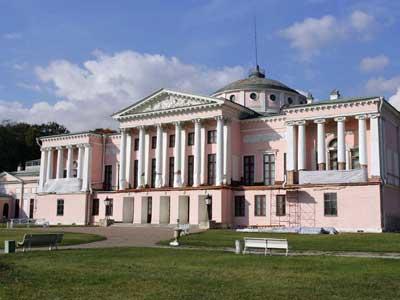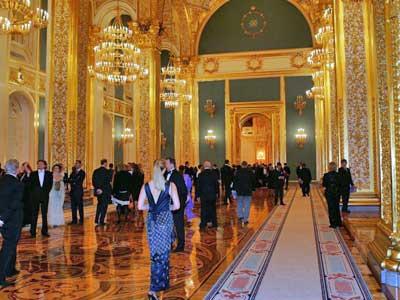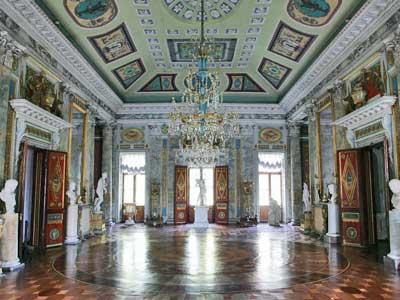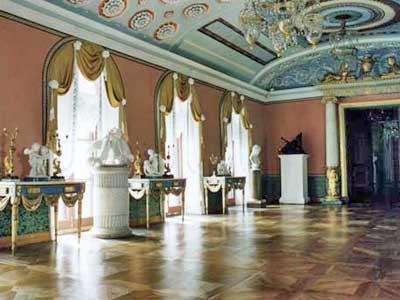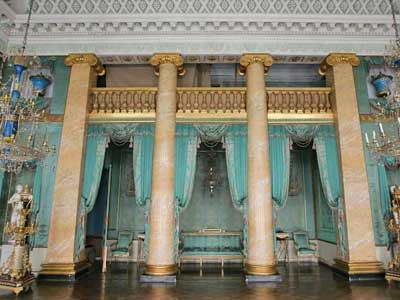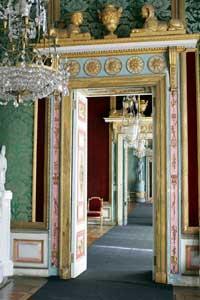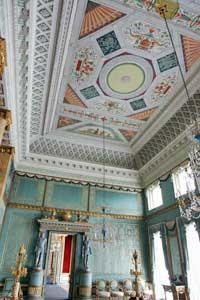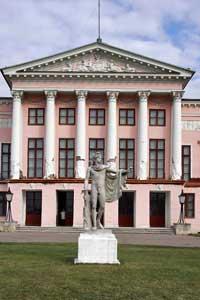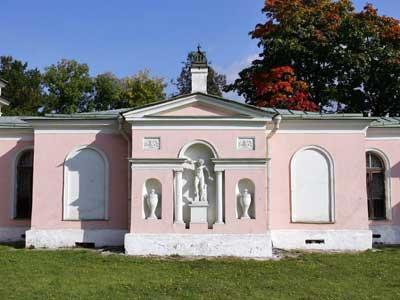Ostankino Estate Museum
Background
Ostankino Estate Museum has stood on the outskirts of Moscow for more than 250 years. Count Nicholas Petrovich Cheremetiev (1751-1809) commissioned this neoclassical building and it was built between 1792 and 1798. Ostankino served both as his personal residence and as a creative hub for artists, musicians, and writers. The estate was designed by a group of architects and craftsmen who lived as serfs on the count’s land. The entire palace was laid out on a single story; its central space is a domed pavilion that lies between two large halls, a theater, and an assortment of smaller domestic areas. The rooms are decorated in a variety of styles, such as Egyptian, Italian, and Greek, and use an ample combination of wallpaper, stucco, wood, faux marble, and papier-mâché to achieve desired design effects. The count acquired a reputation for entertaining hundreds of guests at his home with recitals, theatrical performances, and all manner of social gatherings. After the Russian Revolution in 1917, the estate was appropriated as a state museum but suffered from neglect and poor repairs in the decades after its conversion.
How We Helped
In the late 20th century, the foundations of the museum were weakening as a result of rising groundwater. The building had not been heated since 1917 and interior temperatures fluctuated between -15° Celsius in the winter and 25° Celsius in the summer, wreaking havoc on the walls, paint, and adhesives used in the decoration. In 2004, the museum authorities had begun stabilizing the building and correcting structural problems, but the interiors continued to deteriorate. World Monuments Fund organized a conference of painting and wall paper experts, which resulted in a comprehensive plan for the restoration of the Picture Gallery, one of the main halls of the estate. After surveying the room, the group of conservators determined that the ceiling mural was painted in the 1930s over the original decoration. However, they decided to retouch and leave the latter layer because of its fine quality and technique. The Picture Gallery project was carried out by WMF with the assistance of the Ostankino Estate Museum and the Moscow municipal authorities.
Why It Matters
Count Nicholas Petrovich Cheremetiev desired his residence outside Moscow to be a “palace dedicated to the arts.” The first space completed within the building was a private theater, where the most talented musical and theatrical performers of the day thrilled the count’s guests. Even Czar Paul I visited the estate before his coronation in 1796 to see an opera by Andre Ernest Modeste Grétry. The plan of the theater was conceived by architects Alexei Mironov and Grigori Dikouchine and is considered a rare and splendid example of the 18th century type. Indeed, all of the palace’s many rooms are spectacularly ornamented with stucco, wood, stone, and paint and are illuminated by magnificent chandeliers and finely wrought fixtures. Now that its interiors have been restored and preserved, the Ostankino Estate Museum is open to the public during the summer.

